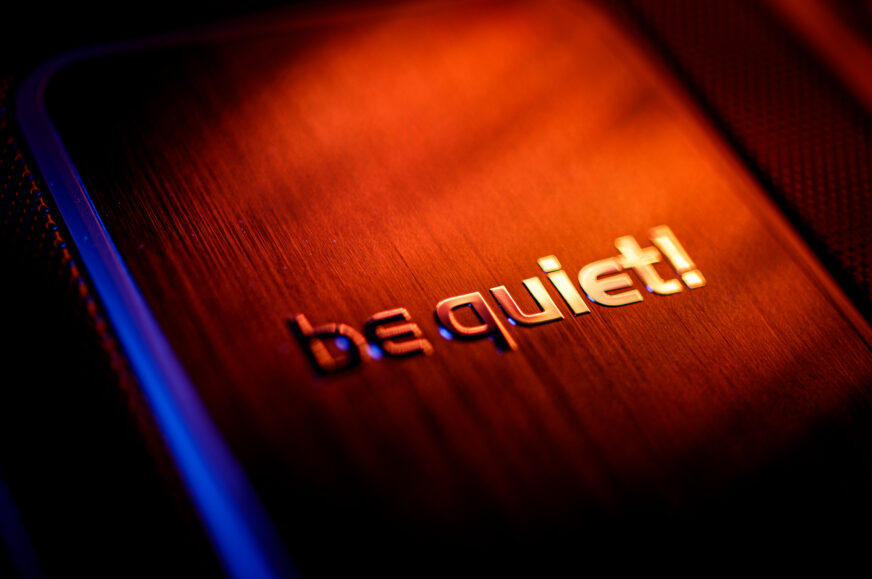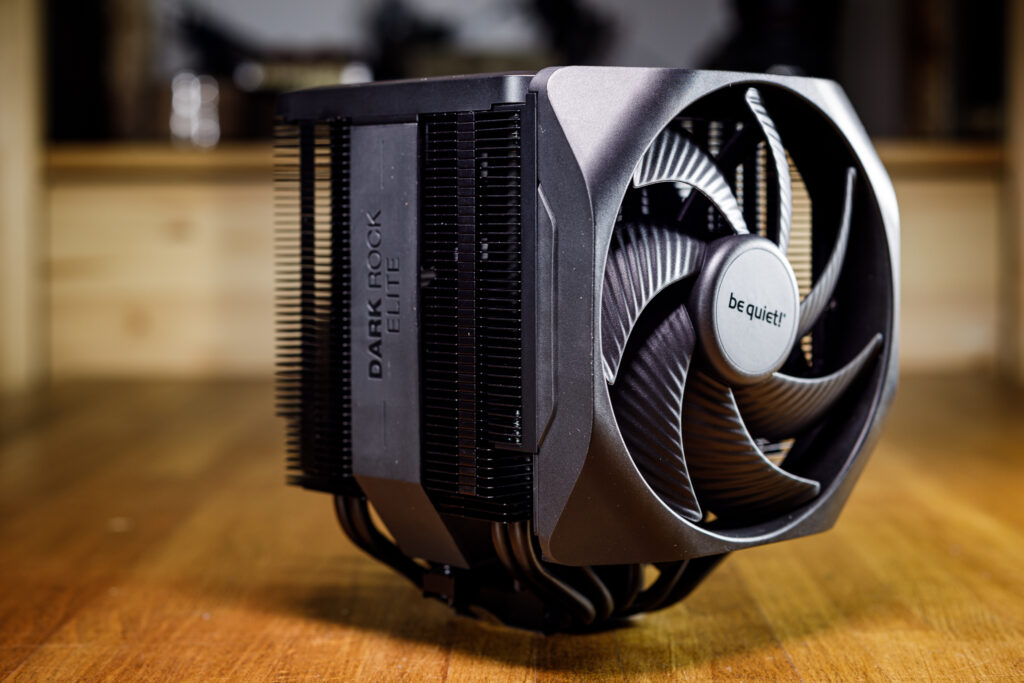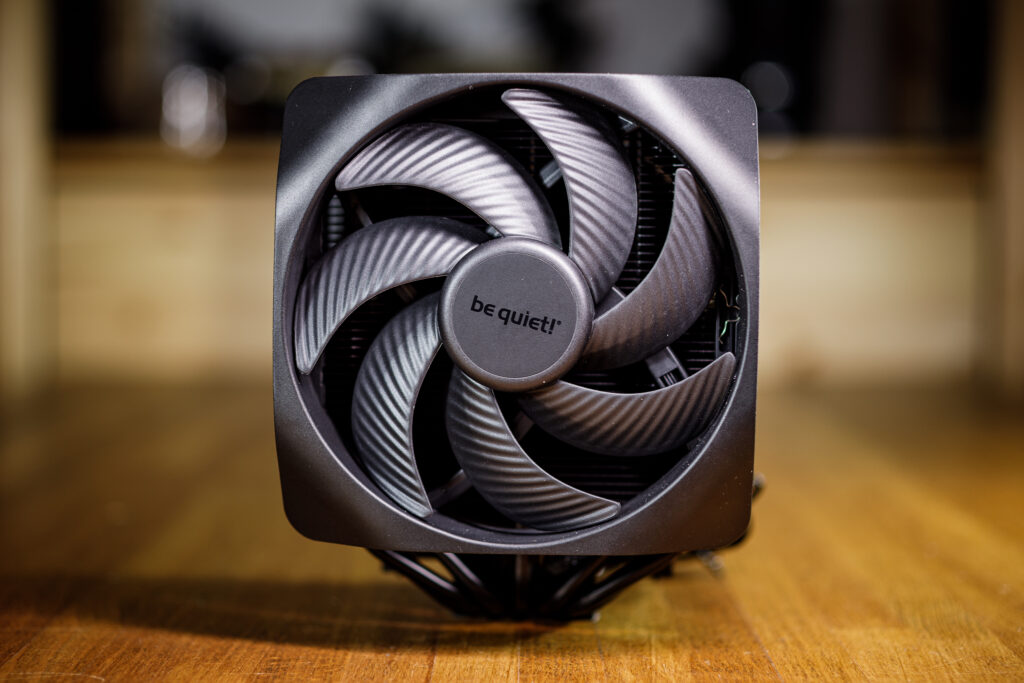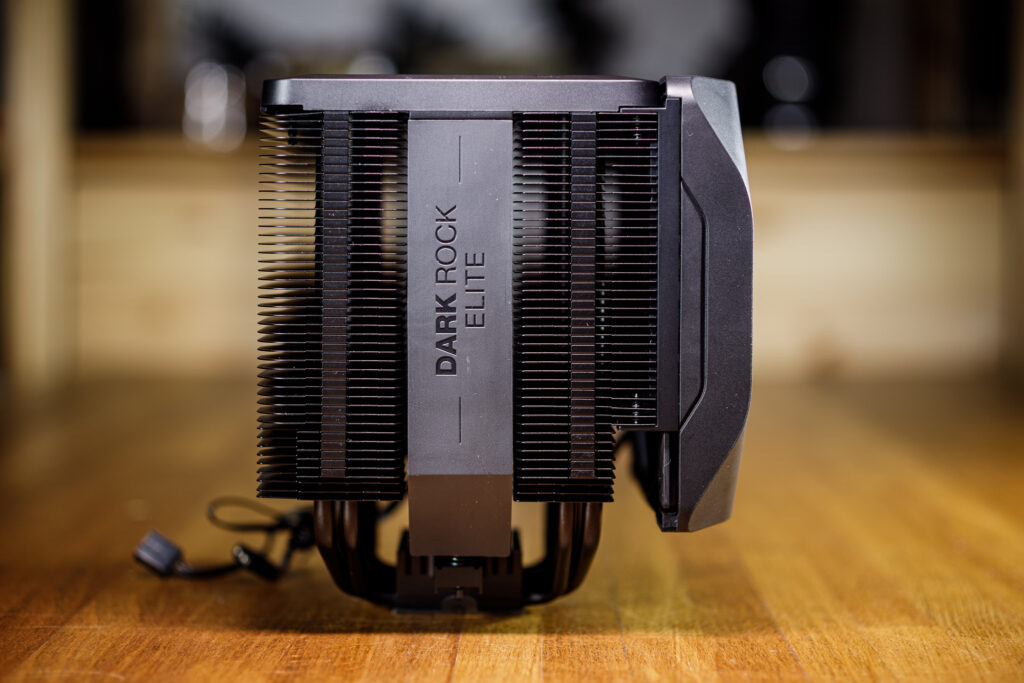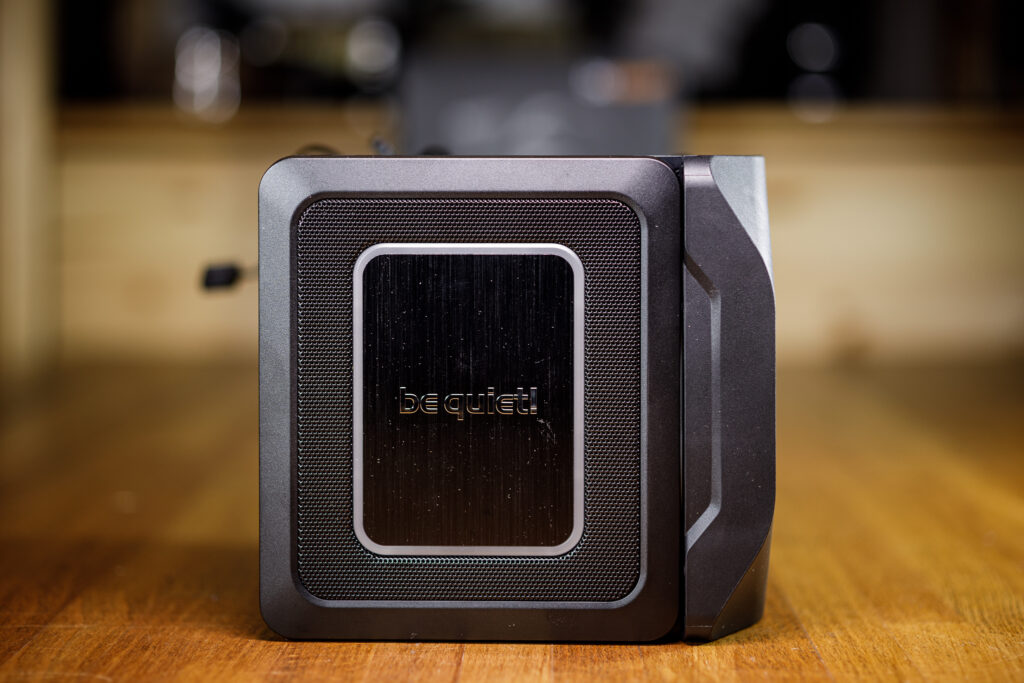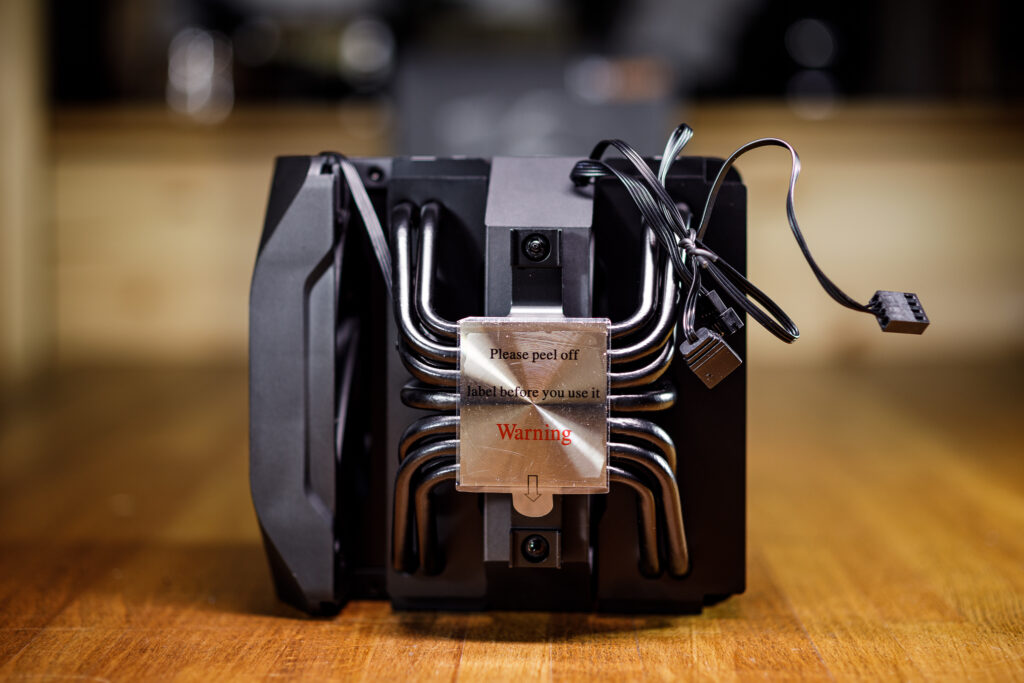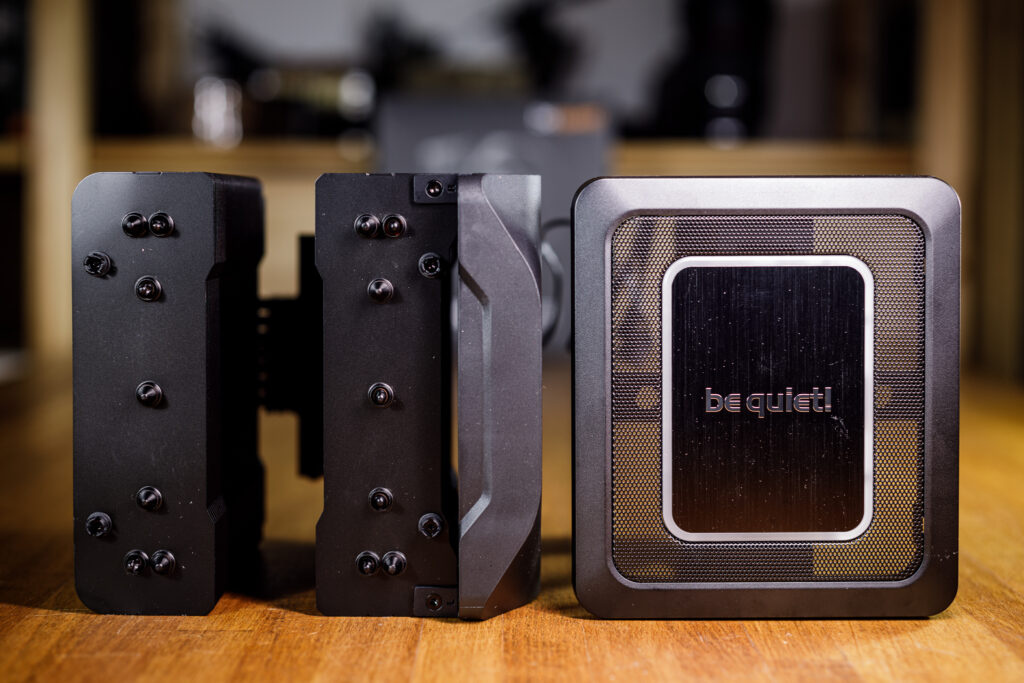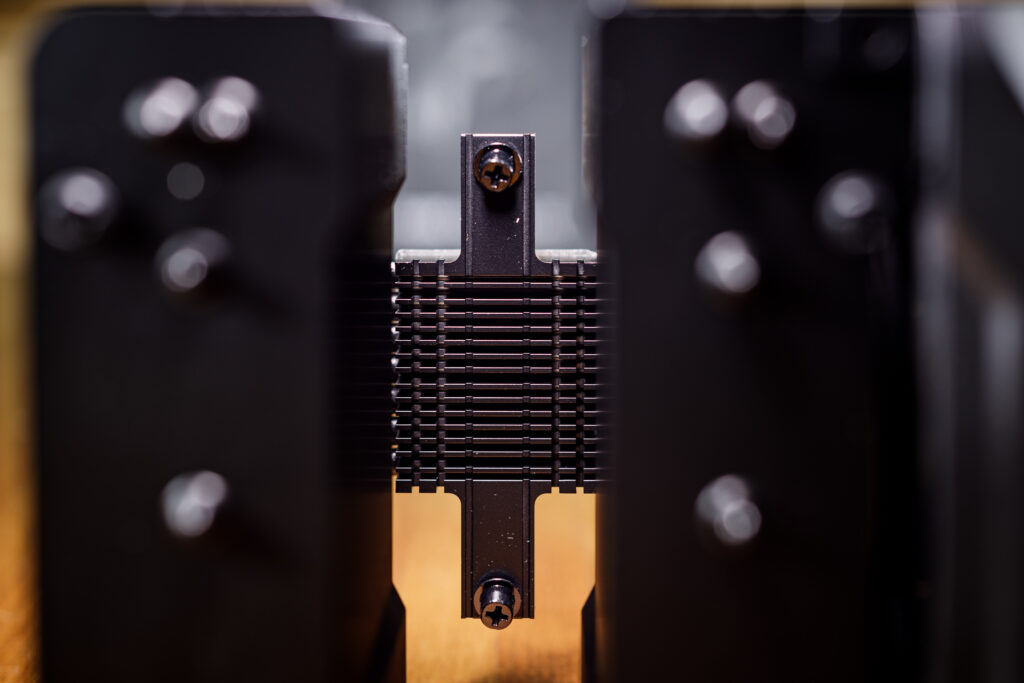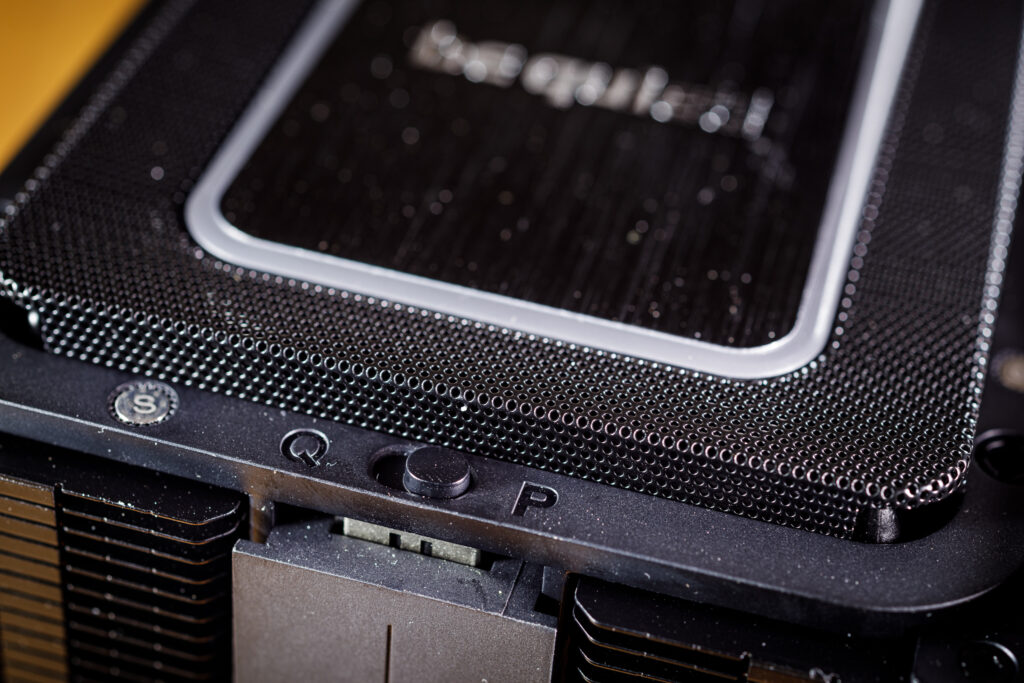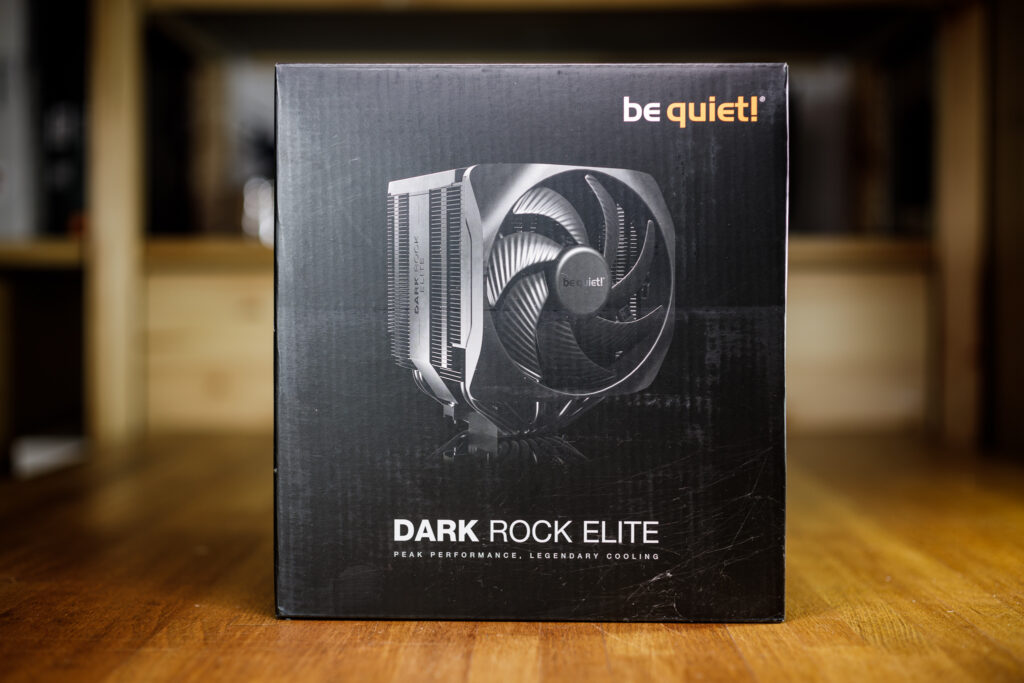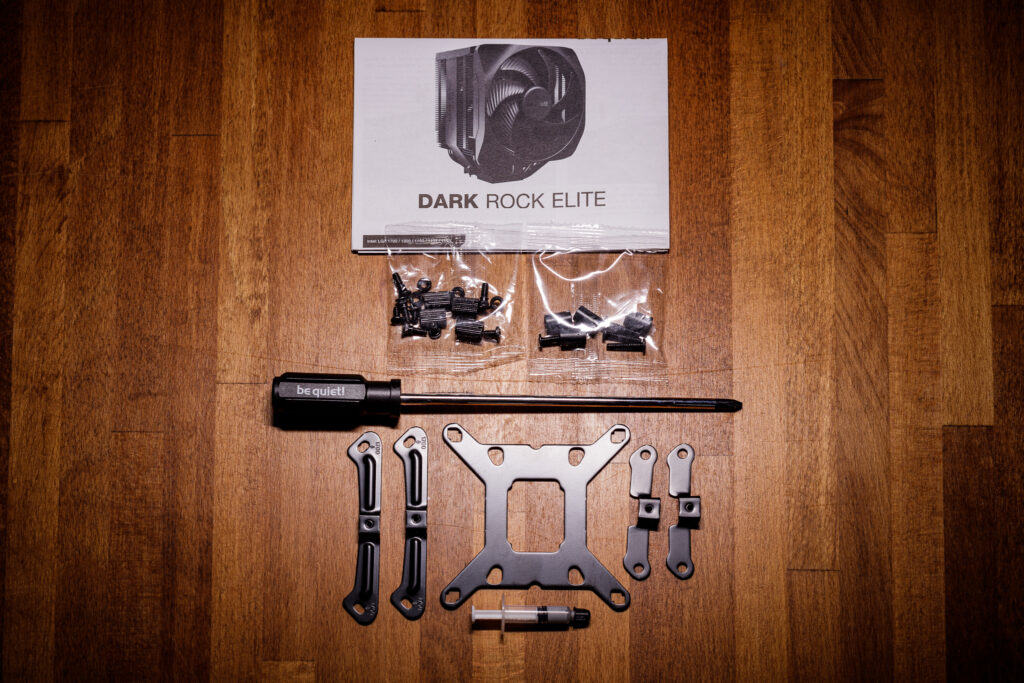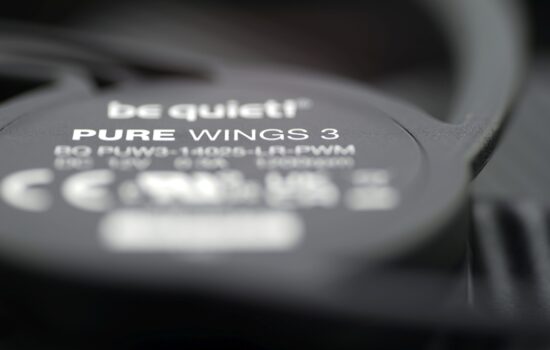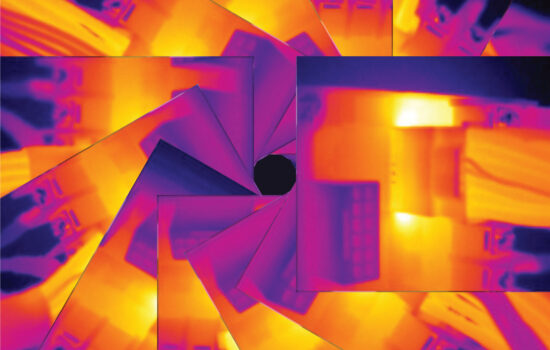Key features
I will start this year’s cooler tests with a real treat. I’ve prepared a review of the Dark Rock Elite cooler, the absolute top of BeQuiet!’s range. This is a premium cooler offering very high performance at low noise levels thanks to its sophisticated design in combination with high-end fans. I’m very curious to see how it performs compared to the high-end coolers I’ve had the opportunity to test over the past year.
Key features of the cooler
Dark Rock Elite was recently launched together with the successor of the well-known Dark Rock Pro cooler, now in its fifth version. Both of these coolers are very similar, so most of the things from today’s article, when we discuss the Dark Rock Elite in detail, will also apply to the Dark Rock Pro 5. But while the Dark Rock Pro 5 is the logical evolution of the previous model, the Dark Rock Elite represents the new pinnacle of BeQuiet!’s range. At first glance, it’s already clear that this is a premium cooler with an emphasis on maximum cooling efficiency.
The cooler’s heatsink is made up of two dense bundles of aluminium fins, which are interconnected by seven six-millimeter copper heatpipes. These heatpipes take care of the heat distribution from the large copper base of the cooler with its large coldplate surface. This contact area is the only element of the cooler that is not in a matte black finish, but is coated with a thin layer of nickel to protect the copper from oxidation. In addition, the manufacturer states that this cooler is fully compatible with liquid metal as well, if you are handy and brave enough to use liquid metal between the cooler and the CPU heat spreader instead of the traditional method with thermal paste. According to the manufacturer, the remaining surface area of the cooler is covered with a layer of black paint with ceramic particles for a sleek look while maintaining high thermal conductivity.
The top surface is almost extravagant by the standards of BeQuiet! coolers, taken with exaggeration of course. In the centre is a silver logo on a thin brushed aluminium plate in black. Surrounding this plate is a translucent white stripe that hides the ARGB LEDs and if I’m not mistaken, this is the first cooler from the BeQuiet! range to include some sort of backlighting. Not counting the Pure Rock 2 FX cooler, where a fan from the Light Wings series takes care of the backlighting.
The top cover is easily removable, including the middle fan, to which it is connected by the frame. This gives access to a pair of screws with springs for optimal pressure, which are fixed to the base of the cooler. The top surface of the base is designed as another small passive cooler. The total finned area may not be very large, but every watt counts.
Under the top cover, there is not only ARGB LEDs, but also an integrated splitter for both fans, which also serves as a maximum speed limiter. Simply remove the magnetically attached edge of the top cover, which hides a two-mode switch. Q(uiet) mode limits the maximum speed of both fans, while P(erformance) mode lets the fans run at full speed.
And while the middle fan is connected by the frame to the top surface of the cooler, the fan on the front tower is mounted in plastic rails and can be slid upwards in several steps. Along with the cutout in the front tower’s fin bundle, this feature serves to maximize the cooler’s compatibility with tall RAM modules, but it adds quite a bit to the already very tall profile of the entire cooler. Unfortunately, both of the fans used have proprietary connectors for plugging into the integrated splitter/limiter and are also attached to the cooler in an atypical manner. This makes their eventual replacement very difficult, although the vast majority of users probably won’t ever be expected to take this step.
The accessories of the Dark Rock Elite cooler may look surprisingly modest, but it all fits nicely into the philosophy of BeQuiet!, which has never indulged in fads or unnecessary things. Don’t let the first impression fool you though, there’s nothing missing here. The mounting system components are universal for both Intel and AMD processors, so only the bars differ. You will look in vain for fan clips here, which is logical given the design of the cooler. There is, however, the famous long-shafted screwdriver with a magnetic tip, which you will appreciate especially when installing the cooler to the mounting system bars, but personally I have been using an older version of it for many years as a universal tool when assembling computer builds.
Cooler and fan parameters
The first thing that catches your eye when you look at the Dark Rock Elite cooler is its overall size. This really is no small cooler for compact builds. With a minimum height of 168mm, you’ll need to be very careful when choosing a suitable case. Additionally, if you want to move the front fan to a higher position to allow enough room for tall RAM modules, be prepared for an overall cooler height of up to 206 mm! However, with low profile modules you can leave the front fan in its default position. Thus, compared to its direct competitors, the Dark Rock Elite does not stand out from the crowd. And price-wise, it also fits in nicely with the other top-end coolers from other manufacturers.
| Cooler | BeQuiet! Dark Rock Elite | Noctua NH-D15 chromax.black | Cooler Master MasterAir MA824 Stealth | |
| Supported sockets | Intel LGA 115x, 1200, 1700, 20xx; AMD AM4/AM5 | |||
| Height | 168 mm | 165 mm | 166 mm | |
| Width | 136 mm | 150 mm | 151 mm | |
| Depth with fan | 146 mm | 161 mm | 162 mm | |
| Weight | 1332 g | 1320 g | 1630 g | |
| Maximum RAM height | acc. to front fan position (keep in mind the cooler's total height) | |||
| MSRP | 115 EUR | 119 EUR | 109 EUR |
The 135mm fans used here are modified versions from the Silent Wings 4 series with the ability to plug both fans into a splitter/controller under the top cover of the cooler, so you only need a single PWM header on the motherboard. You also have the option to adjust their maximum fan speeds to 1500 and 2000 RPM respectively, using the Q/P switch under the top cover. These are very powerful fans in terms of parameters, so I just hope that the manufacturer has also worked on their acoustic optimization in order to keep the noise level low even at higher speeds.
| Fan | Silent Wings 4 | Noctua NF-A15 PWM | Mobius 135/120 | |
| Bearing | FDB | SSO2 | LDB | |
| Speed range | 400–2000 rpm | 300–1500 rpm | 0–1550/1950 rpm | |
| Max. airflow | 136.2 m3/h | 140.2 m3/h | 108.0/107.2 m3/h | |
| Max. static pressure | 2.41 mm H2O | 2.08 mm H2O | 1.92/2.69 mm H2O |
- Contents
- Key features
- Measurement methodology
- Results – 39 dBA
- Results – 42 dBA
- Results – 45 dBA
- Results – 48 dBA
- Results – maximum speed
- Spectral analysis of noise
- Conclusion and evaluation





